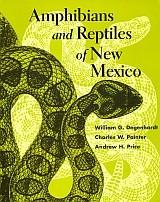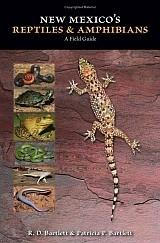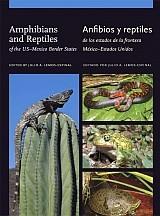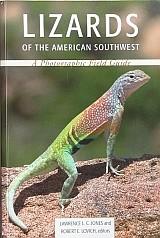




Related bibliographies:
North America
USA
Reptiles
 Lizards Lizards
 Anguidae Anguidae
 Crotaphytidae Crotaphytidae
 Eublepharidae Eublepharidae
 Helodermatidae Helodermatidae
 Phrynosomatidae Phrynosomatidae
 Scincidae Scincidae
 Teiidae Teiidae
 Snakes Snakes
 Colubridae Colubridae
 Elapidae Elapidae
 [terrestrial spp.] [terrestrial spp.]
 Leptotyphlopidae Leptotyphlopidae
 Viperidae Viperidae
 Turtles Turtles
 Chelydridae Chelydridae
 Emydidae Emydidae
 Kinosternidae Kinosternidae
 Testudinidae Testudinidae
 Trionychidae Trionychidae






































































































































































































































































































































| |

Note:
In order to limit redundancy, relevant literature indexed in the related bibliographies in the left column may not have been included in this page. For a comprehensive search of literature, these bibliographies should therefore also be consulted.
 |
Baltosser, W.H.; Best, T.L. 1990. Seasonal occurrence and habitat utilization by lizards in southwestern New Mexico. Southwestern Naturalist 35(4): 377-384.
Bartlett, R.D.; Bartlett, P.P. 2013. New Mexico's reptiles and amphibians: a field guide. University of New Mexico Press. 360 pp.
Bateman, H.L.; Chung-MacCoubrey, A.; Snell, H.L.; Finch, D.M. 2009. Abundance and species richness of snakes along the Middle Rio Grande riparian forest in New Mexico. Herpetological Conservation and Biology 4(1): 1-8.
Best, T.L.; James, H.C.; Best, F.H. 1983. Herpetofauna of the Pedro Armendariz lava field, New Mexico. Texas Journal of Science 35(3): 245-255.
Bezy, R.L.; Cole, C.J. 2014. Amphibians and reptiles of the Madrean Archip of Arizona and New Mexico. American Museum Novitates 3810: 1-23.
Bragg, A.N.; Dundee, H.A. 1949. Reptiles collected in the vicinity of Las Vegas, New Mexico. Great Basin Naturalist 9(3-4): 55-57.
Bugbee, R.E. 1942. Notes on animal occurrence and activity in the White Sands National Monument, New Mexico. Transactions of the Kansas Academy of Sciences 45: 315-321.
Bundy, R.E. 1951. New locality records of reptiles in New Mexico. Copeia 1951: 314.
Byers, M.; Sias, D.S.; Stuart, J.N. 2007. The introduced Mediterranean Gecko (Hemidactylus turcicus) in north-central New Mexico. Bulletin of the Chicago Herpetological Society 42(2): 18-19.
Campbell, H.W. 1953. Observations on snakes DOR in New Mexico. Herpetologica 9: 157-160.
Campbell, H.W. 1956. Snakes found dead on the roads of New Mexico. Copeia 1956: 124-125.
Chenoweth, W.L. 1950. Records of amphibians and reptiles from New Mexico, Utah, and Arizona. Transactions of the Kansas Academy of Sciences 53: 532-534.
Cockerell, T.D.A. 1896. Reptiles and batrachians of Mesilla Valley, New Mexico. American Naturalist 30: 325-327.
Collins, J.T.; Collins, S.L.; Irwin, K.J. 2006. A survey of the amphibians, turtles, and reptiles of the eastern portion of the Kiowa National Grassland of New Mexico and the Rita Blanca National Grassland of adjacent Oklahoma and Texas. Journal of Kansas Herpetology 18: 10-20.
Davidson, A.D.; Lightfoot, D.C.; Mclntyre, J.L. 2008. Engineering rodents create key habitat for lizards. Journal of Arid Environments 72(12): 2142-2149.
Degenhardt, W.G.; Christiansen, J.L. 1974. Distribution and habitats of turtles in New Mexico. Southwestern Naturalist 19(1): 21-46.
Degenhardt, W.G.; Painter, C.W.; Price, A.H. 1996. Amphibians and reptiles of New Mexico. University of New Mexico Press, Albuquerque. 431 pp.
Denburgh, J. van 1924. Notes on the herpetology of New Mexico with a list of species known from that state. Proceedings of the California Academy of Sciences (Ser. 4) 4 13: 189-230.
Des Roches, S.; Brinkmeyer, M.S.; Harmon, L.J.; Rosenblum, E.B. 2015. Ecological release and directional change in White Sands lizard trophic ecomorphology. Evolutionary Ecology 29(1): 1-16.
DeVore, M.L. 1985. The horned lizards of New Mexico. Canadian Amphibian and Reptile Conservation Society Bulletin 23(1): 1-4.
Dixon, J.R. 1967. Aspects of the biology of the lizards of the White Sands, New Mexico. Contributions in Science (Los Angeles) 129: 1-22.
Dixon, J.R.; Medica, P.A. 1965. Noteworthy records of reptiles from New Mexico. Herpetologica 21: 72-75.
Dixon, J.R.; Medica, P.A. 1966. Summer food of four species of lizards from the vicinity of White Sands, New Mexico. Contributions in Science (Los Angeles) 121: 1-6.
Gehlbach, F.R. 1965. Herpetology of the Zuni Mountains region, northwestern New Mexico. Proceedings of the United States National Museum 116: 243-332.
Gehlbach, F.R. 1979. Biomes of the Guadalupe Escarpment: vegetation, lizards and human impact. National Parks Service Transactions and Proceedings Series 4: 427-439.
Harings, N.M.; Boykin, K.G.; Oligschlaeger, L. 2014. Reptile occurrence and habitat associations on Holloman Air Force Base. Herpetological Conservation and Biology 9(1): 57-66.
Harris, A.H. 1965. The origin of the grassland amphibian, reptilian, and mammalian faunas of the San Juan-Chaco River drainage. Dissertation Abstracts 26: 1228.
Herrick, C.L.; Herrick, H.N.; Terry, J. 1899. Notes on a collection of lizards from New Mexico. Bull. Denison Univ. 11: 117-148.
Ireland, T.T.; Wolters, G.L.; Schemnitz, S.D. 1994. Recolonization of wildlife on a coal strip-mine in northwestern New Mexico. Southwestern Naturalist 39(1): 53-57.
Johnson, K.; Butler, J.; Racz, G.R. 2003. Fort Union National Monument reptile, amphibian and mammal inventory. Final report. Natural Heritage New Mexico, Albuquerque. 15 pp.
Johnson, K.; Sadoti, G.; Racz, G.; Butler, J.; Chauvin, Y. 2003. National Park Service Southern Plains Network: final inventory report for New Mexico parks. Natural Heritage New Mexico, Albuquerque. 104 pp.
Jones, L.L.C.; Lovich, R.E. (eds.). 2009. Lizards of the American southwest. A photographic field guide. Rio Nuevo Publishers, Tucson, Arizona. 568 pp.
Jones, L.L.C.; Painter, C.W. 2005. Herpetology of the Coronado National Forest: managing our natural heritage. U.S. Forest Service Rocky Mountain Research Station Proceedings RMRS-P 36: 333-336.
Jorgensen, E.E.; Demarais, S. 1998. Herpetofauna associated with arroyos and uplands in foothills of the Chihuahuan Desert. Southwestern Naturalist 43(4): 441-448.
Klauber, L.M. 1934. An addition to the fauna of New Mexico and a deletion. Copeia 1934: 52.
Leavitt, D.J.; Fitzgerald, L.A. 2013. Disassembly of a dune-dwelling lizard community due to landscape fragmentation. Ecosphere 4(8): 97, 1-15.
Lemos-Espinal, J.A. 2015. Amphibians and reptiles of the US-Mexico border states. Texas A&M University Press, College Station, 614 pp.
Lewis, T.H. 1949. Dark coloration in the reptiles of the Tularosa Malpais, New Mexico. Copeia 1949(3): 181-184.
Lewis, T.H. 1950. The herpetofauna of the Tularosa Basin and Organ Mountains of New Mexico with notes on some ecological features of the Chihuahuan Desert. Herpetologica 6(1): 1-10.
Lightfoot, D.C. 1997. The fauna of El Malpais National Monument. New Mexico Bureau of Mines & Mineral Resources Bulletin 156: 139-154.
Little, E.L.; Keller, J.G. 1937. Amphibians and reptiles of the Jornada Experimental Range, New Mexico. Copeia 1937: 216-222.
Loftin, S.R.; Aguilar, R.; Chung MacCoubrey, A.L.; Robbie, W.A. 1995. Desert grassland and shrubland ecosystems. U.S. Forest Service General Technical Report RM 268: 80-94.
Lowe, C.H. 1955. The eastern limit of the Sonoran Desert in the United States with additions to the known herpetofauna of New Mexico. Ecology 36: 343-345.
Mecham, J.S. 1979. The biogeographical relationships of the amphibians and reptiles of the Guadalupe Mountains. National Parks Service Transactions and Proceedings Series 4: 169-179.
Mosauer, W. 1932. The amphibians and reptiles of the Guadalupe Mountains of New Mexico and Texas. Occasional Papers of the Museum of Zoology University of Michigan 246: 1-18.
Ortega-Berno, V.; Parish, W.A.; Mali, I. 2018. Twenty years of herping: Updated visual representation of species richness in New Mexico. Southwestern Naturalist 62(3): 215–220.
Reynolds, R.P. 1979. Resource use, habitat selection, and seasonal activity of a Chihuahuan snake community. Dissertation Abstracts International (B) 39(12): 5741.
Ruthven, A.G. 1907. A collection of reptiles and amphibians from southern New Mexico and Arizona. Bulletin of the American Museum of Natural History 23: 483-603.
Smith, P.W. 1955. An addition to the list of pallid animals occurring in White Sands National Monument. Copeia 1955(2): 135.
Stuart, J.N. 1995. Notes on aquatic turtles of the Rio Grande drainage, New Mexico. Bulletin of the Maryland Herpetological Society 31(3): 147-157.
Stuart, J.N. 2000. Additional notes on native and non-native turtles of the Rio Grande drainage basin, New Mexico. Bulletin of the Chicago Herpetological Society 35(10): 229-235.
Szaro, R.C. 1991. Wildlife communities of southwestern riparian ecosystems. pp. 172-201. In: Rodiek, J.E. & Bolen, E.G. (eds.). Wildlife and habitats in managed landscapes. Island Press, Washington, D.C. 220 pp.
Tanner, D.L. 1975. Lizards of the new Mexican Llano Estacado and its adjacent river valleys. Studies Nat. Sci. 2(2): 1-39.
Vore, M. de 1985. Status of endangered species of reptiles and amphibians of New Mexico. Canadian Amphibian and Reptile Conservation Society Bulletin 22(4): 1-2.
White, L.A. 1947. Notes on the ethnozoology of the Keresan Pueblo Indians. Papers of the Michigan Academy of Science, Arts and Letters 31: 223-243.
Williamson, M.A.; Hyder, P.W.; Applegarth, J.S. 1994. Snakes, lizards, turtles, frogs, toads and salamanders of New Mexico, a field guide. Sunstone Press, Santa Fe. 176 pp.
Yarrow, H.C. 1876. Report upon the collections of batrachians and reptiles made in portions of Nevada, Utah, California, Colorado, New Mexico, and Arizona, during the years 1871, 1872, 1873 and 1874. U.S. Geogr. Geol. Explor. Surv. West 100th Meridian 5: 509-584.
|
| |




















































































































































































|



